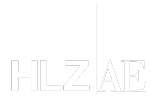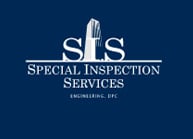California’s 2025 Title 24 Code: The 5 Biggest Changes Impacting Construction in 2026 and Beyond
14.11.2025
California’s 2025 Title 24 Building Standards Code officially takes effect on January 1, 2026, ushering in major updates for developers, architects, engineers, and construction teams statewide. Due to the recently passed AB 130, any state or local amendments to Title 24 will be delayed for six years, meaning the 2025 code cycle will remain in force through at least 2031. This makes understanding the changes now essential for avoiding redesigns, permit delays, and costly code compliance issues. Below is a breakdown of the five most significant 2025 Title 24 updates—and what they mean for California projects moving forward. 1. Occupied Roofs: Expanded Requirements for Safety, Egress & High-Rise Classification One of the biggest shifts in the 2025 code relates to the rapid growth of occupied and amenity roofs in new construction and major renovations. Title 24 now includes several new provisions aimed at strengthening life safety, egress, and height classification. Key Updates: Occupied roofs now count toward building height. This can tip a building into high-rise classification, triggering stricter fire protection and structural requirements. Occupancy calculations now apply to usable roofs, impacting egress width, plumbing fixture counts, and allowable occupant loads. Most occupiable roofs will require multiple means of egress, impacting stairs, exit pathways, and layout planning. Why it matters: These updates significantly expand early design coordination, especially for multifamily, hotel, mixed-use, commercial, and retail projects incorporating rooftop amenities. Misinterpreting these requirements can lead to redesigns or re-submissions. 2. Lithium-Ion Battery Uses and BESS Facilities Receive Stricter Code Requirements With the rise of Battery Energy Storage Systems (BESS) and lithium-ion battery facilities across California, Title 24 now classifies these uses more clearly and sets stricter fire-life-safety standards. Key Updates: Mandatory fire sprinkler coverage is now required for: Labs developing or testing lithium-ion batteries (B/Office Occupancy) F-1 occupancies manufacturing lithium-ion batteries New clarifications on storage, handling, and R&D activities associated with lithium-ion systems. Why it matters: EV infrastructure, microgrids, renewable energy facilities, battery R&D labs, and manufacturing plants will face more prescriptive code pathways, requiring close coordination with fire authorities and AHJs. 3. Wildland-Urban Interface (WUI) Code: New Requirements for Fire-Prone Areas California’s new Wildland-Urban Interface (WUI) Code introduces stronger protections for properties located in Fire Hazard Severity Zones, including hillside, perimeter, and suburban-adjacent developments. Key Updates: More robust fire-resistant construction standards Requirements addressing water supply, fire flow, and emergency access Stricter vegetation and defensible space rules Additional provisions for buildings located in designated WUI zones Why it matters: Developers and design teams will need to anticipate more detailed site planning, material selection, and AHJ reviews early in the process to prevent approvals from stalling. 4. Elevator Lobby Doors: Locking Devices Now Permitted A major pain point in past code cycles has been the requirement for an exit within elevator lobbies—an issue that limited flexibility in many floorplate configurations. The 2025 Title 24 code introduces much-needed relief. Key Updates: Locking devices on elevator lobby doors are now permitted if the building provides: A compliant two-way communication system Emergency lighting Automatic release upon fire alarm activation or during power failure A two-way communication system is also required for horizontal exits Why it matters: This allows far more design flexibility for mid-rise and high-rise buildings, especially offices and residential towers with compact floorplates. 5. Temporary Structures: New Requirements for Long-Duration Installations The 2025 Title 24 code strengthens oversight on temporary structures remaining in service for more than 180 days. Key Updates: Additional inspections required for extended-use temporary structures Enhanced structural criteria for public-occupancy temporary buildings Clarified limits for usage duration, siting, and code compliance Why it matters: Event spaces, modular offices, temporary facilities, and long-term installations must now undergo more rigorous review—especially in public or high-traffic environments. Why These 2025 Code Changes Matter for California Developers With the 2025 Title 24 Code becoming locked in until 2031, design teams must align early to avoid non-compliance, costly redesigns, and delayed approvals. These updates especially affect: Mixed-use and multifamily developments Hospitality and retail projects adding rooftop amenities Renewable energy and battery storage facilities Properties located in wildfire-prone zones Projects using long-term temporary installations Complex vertical transportation layouts


.png)






